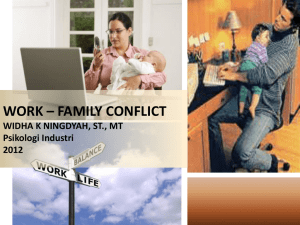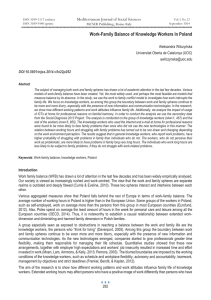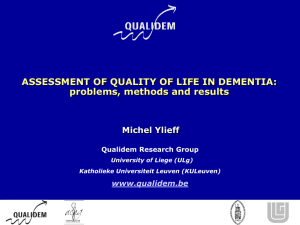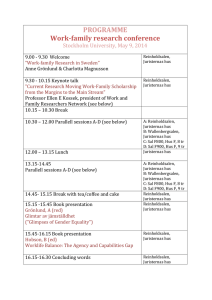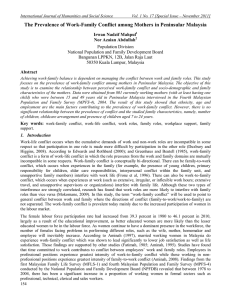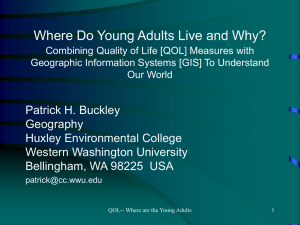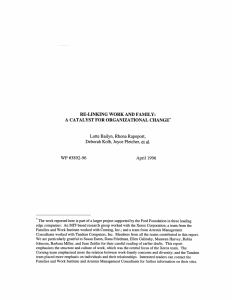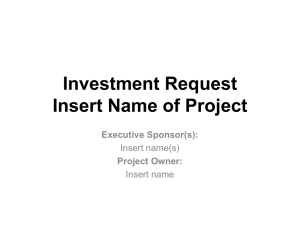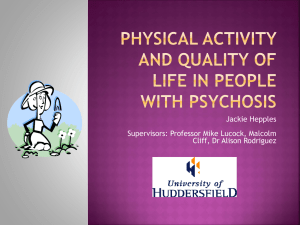Role theory perspectives on work and family
advertisement
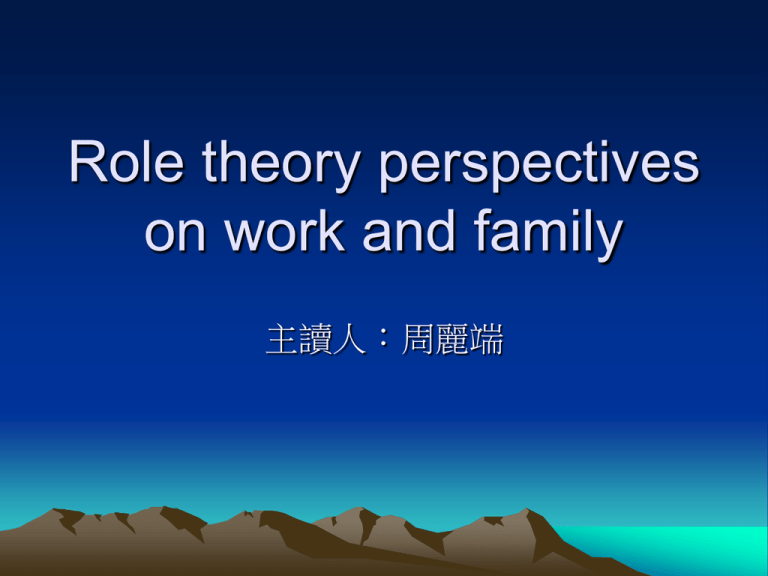
Role theory perspectives on work and family 主讀人:周麗端 introduction Two different approaches 1.work-family conflict: inter-role conflict work and family are in basic conflict 2.role enhancement perspective expansionist theory human energy is potentially expandable resource Work-family conflict perspective 1980s : married women’s labor force participation experienced a steep increase (beginning in the 1920s) Ozzie-and-Harriet family? Sex-role attitude in the 1970s-1980s? Work-family conflict perspective Employed married women with children were assumed to be less resilient than men with the same role set— depression and anxiety Employed married women were also assumed to be shortchanging their husband and children and put them at risk Work-family conflict perspective View work and family as separate, and conflict sphere Work and family are separate and in competition for time, attention, energy, strain, and behavior……… Work-family conflict perspective Each employee is viewed as caught in a zerosum game 1.reduce the energy available for performing other roles 2.increase strain 3.encourage behaviors that are incompatible with the performance of other roles ex. excessive work hours have been related to increased marital tension Work-family conflict perspective -Gender difference in work-family conflict gender: gender had far less impact on workfamily conflict than did family structure marital status: dual-earner couples experience similar levels of conflict and far less work-family stress than did heads of single-parent families Work-family conflict perspective -Long work hours as a predictor of health and QOL Several studies challenge the assumed link of long work hours and negative outcomes ex. The more hours worked by women and men in full-time employed couples, the lower their distress ex. Within-couples longitudinal research: both husbands and wives, increase in wives’s work hours over time was related to increase in psychological distress and, increase in parentrole quality Work-family conflict perspective -Long work hours and work-family conflict Weak relationship -Work-family conflict as a predictor or health and QOL Work-to-family conflict Family-to-work conflict -Work-family conflict as a mediator Stressful job condition-work/family conflict-health, QOL Work-family conflict perspective Working hours Long hours gemder health and QOL work-family conflict Role enhancement perspective Women’s natural role? Men’s natural role? Adding the worker role is beneficial to women Adding in family role is beneficial foe men Role enhancement perspective -Number of roles as a predictor of health and QOL Rewards associated with multiple-role occupancy buffering of the negative opportunities for social support, multiple opportunities to experience success ……… subjective sense of success in balancing work and family Role enhancement perspective -Number of roles as a predictor of health and QOL Positive attitude toward employment: low distress The role of parent: employed women showed less distress than nonemployed women with preschool children Role enhancement perspective -Number of roles as a predictor of health and QOL Employment for women and family involment for men are beneficial Role enhancement perspective -Number of roles versus role quality as a predictor of health and QOL Role quality is more important to mental and physical health and quality of life than is the number of roles or time spent in a particular role Role enhancement perspective -Indirect effect of multiple roles Moderation Negative job experience Mediation Economic hardship distress marital conflict distress Marital conflict Future directions Integrating the work-family conflict and role enhancement perspectives Taking a system approach to the work-family interface the effect of one partner to the other: couple dependents worker’s QOL schedule fit: adaptive strategies for maximizing both of their abilities to meet workplace and family systems needs family level effects: partners, children, and other members of the employee’s family system Q and A
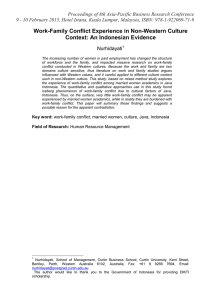
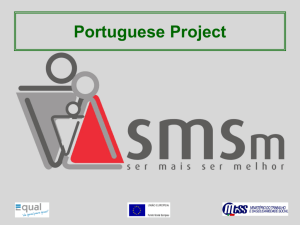
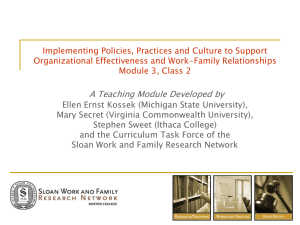
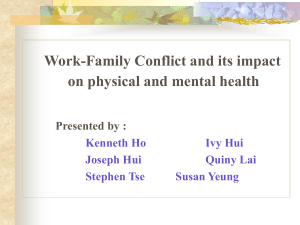
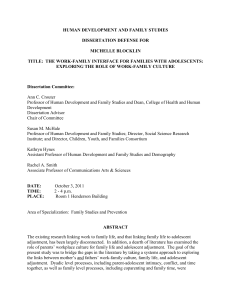
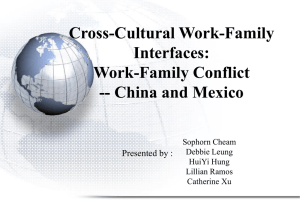
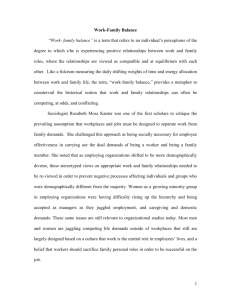
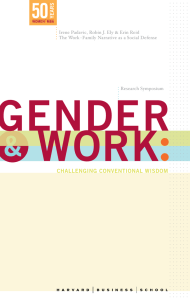
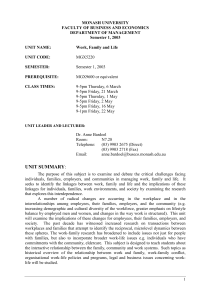
![[Edited] M. Secret review of Work and Life Integration](http://s3.studylib.net/store/data/007401433_1-93a8f56817d885815d49cb45034a65a4-300x300.png)
